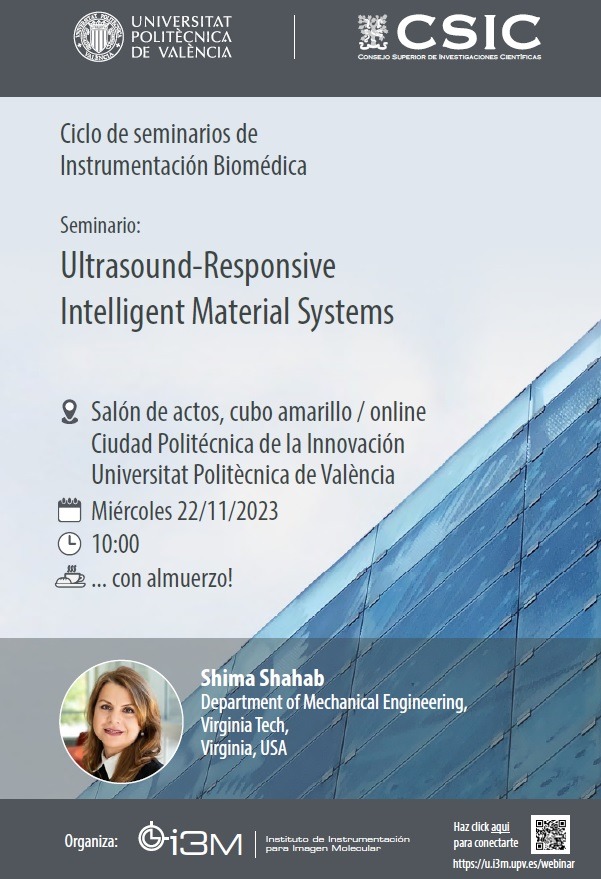Shima Shahab
 Lugar: Salón de actos, cubo amarillo / en linea, CPI, Universitat Politècnica de València, Valencia.
Lugar: Salón de actos, cubo amarillo / en linea, CPI, Universitat Politècnica de València, Valencia.
Fecha: 22 de noviembre de 2023.
Department of Mechanical Engineering at Virginia Tech, Virginia, USA.
Abstract:
Ultrasound-Responsive Intelligent Material Systems Intelligent material systems, often known as smart materials, may adapt their behavior in response to changes in external stimuli. The use of smart materials
in numerous sensitive applications has increased the demand for a remote, wireless, e cient, and physiologically safe stimulus. These needs will be addressed in this presentation by using Focused Ultrasound (FUS) as an external trigger. To achieve the desired response of an ultrasound-responsive smart structure, FUS has the unique property of maintaining both spatial and temporal control and propagating over large distances with low losses. Shape Memory Polymers (SMPs) and piezoelectric (PZT) materials will be discussed as ultrasound-responsive smart materials. First, we will look into the acoustic-thermoelastic dynamics of ultrasound-stimulated SMPs in order to develop next-generation delivery, sensing, and morphing devices. When activated by FUS, SMPs can be manipulated into any temporary shape and then recover to their stress-free permanent shape. FUS is a promising stimulus with the unique and superior capacity to cause localized heating, activate various intermediate shapes, and enable noninvasive shape recovery in polymers. Second, we’ll go through the fundamentals of PZT-based Ultrasonic Power Transfer (UPT) systems.
UPT along with acoustic holograms is a new technique that relies on piezoelectric receivers to receive FU in selective patterns. UPT is used to wirelessly charge modest to high-power electronics in biomedical implants and enclosed electronic devices working in unmanned aerial and undersea vehicles. Finally, holographic lenses, also referred to as acoustic holograms, will be discussed. These lenses are utilized to generate complicated FUS fields. They save the desired wavefront’s phase profile, which is utilized to reconstruct the acoustic pressure field when illuminated by a single acoustic source. Because of its robustness, simplicity, and low cost, the use of holographic lenses for sound modification in medical applications has attracted interest in recent years. Ultrasound-guided thermal therapy is one such application that use the absorbed acoustic field to generate a therapeutic effect within the human body.
